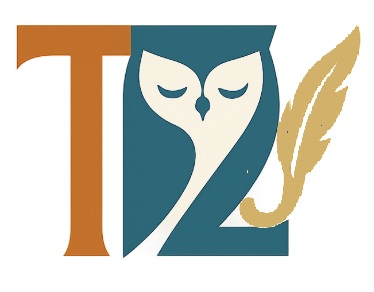Book Review – Don’t Believe Everything You Think by Joseph Nguyen

Have you ever felt trapped in a cycle of anxiety, self-doubt, and overthinking?
You’re not alone. In today’s fast-paced world, many of us find ourselves prisoners of our thoughts, believing every narrative our minds create, often to our detriment. Joseph Nguyen’s concise yet thought-provoking book, “Don’t Believe Everything You Think,” challenges this very tendency, offering a refreshing perspective: while pain may be inevitable, suffering is actually optional.
At just 99 pages, this compact guide presents a paradigm shift in how we understand our thought processes and their impact on our well-being. Nguyen combines elements of Eastern philosophy, mindfulness practices, and neuroscience to deliver a powerful message—that freedom from emotional suffering doesn’t require endless motivation or willpower, but rather a fundamental change in our relationship with our thoughts. Though the book has received mixed reviews regarding its writing style and depth, its core premise resonates deeply with many readers seeking clarity amid mental chaos. In this review, we’ll explore the book’s central message, key concepts, practical applications, structure, critical reception, and who stands to benefit most from Nguyen’s insights.
The Core Message of “Don’t Believe Everything You Think”
Understanding the root of suffering lies in thought processes
Ever noticed how your mind can turn a minor inconvenience into a catastrophe? That’s exactly what Joseph Nguyen explores in “Don’t Believe Everything You Think.” The book’s central premise is deceptively simple yet profound: our suffering doesn’t come from external events but from our thoughts about those events.
Nguyen breaks it down brilliantly. When something happens—say, someone cuts you off in traffic—there’s the event itself, and then there’s the story you tell yourself about it. “That jerk did it on purpose!” “Nobody respects other drivers anymore!” These thoughts, not the cutting off itself, create your anger and frustration.
What makes this book special is how Nguyen shows that recognizing this pattern is the first step toward freedom. Once you see that your thoughts are creating your emotional reality, you gain the power to question them. And when you question them, they often fall apart under scrutiny.
The distinction between thoughts and thinking
Here’s where Nguyen gets interesting. He draws a sharp line between thoughts and thinking.
Thoughts are like weather—they come and go on their own. They appear in your consciousness without invitation. You don’t choose to have the thought “I’m not good enough” or “This will never work out.” These thoughts just show up.
Thinking, on the other hand, is what you do with those thoughts. It’s the active process of engaging with, believing, or rejecting thoughts.
This distinction is game-changing because it means you’re not responsible for every random thought that pops into your head. But you are responsible for whether you take those thoughts seriously or let them pass by like clouds in the sky.
How pain is inevitable, but suffering is optional
Pain happens. Suffering is optional.
This might sound like a bumper sticker, but Nguyen unpacks this idea with remarkable clarity. Physical and emotional pain is part of being human—we’ll all experience loss, disappointment, and physical discomfort. That’s inevitable.
Suffering, though? That’s the layer we add with our thinking. It’s the resistance to what is, the stories about how things “shouldn’t” be this way, the rumination about how unfair life is.
Nguyen isn’t suggesting we should become emotionless robots. Instead, he’s pointing to a more honest relationship with our experience. Feel the pain fully when it arrives. But don’t add the extra layer of suffering by getting caught in thought storms about it.
The most liberating insight from the book is that you can experience pain without the added suffering. When you stop believing every thought about your pain, you discover a profound freedom—the ability to be with whatever life brings without making it worse through your thinking.
Key Concepts and Philosophical Framework

A. The relationship between thoughts and emotions
Have you ever noticed how a single thought can completely change your mood? That’s exactly what Nguyen explores in his book. Our thoughts and emotions are tangled together like headphones left in a pocket – nearly impossible to separate.
Nguyen shows us that thoughts aren’t just passive observations – they’re powerful triggers. Think about your ex, and suddenly you’re feeling angry or sad. Remember that embarrassing thing you said at a party five years ago? Hello, instant anxiety!
But here’s where it gets interesting: Nguyen challenges us to question if our thoughts are even real. Most of us automatically believe whatever pops into our heads. “I’m not good enough” becomes your reality if you don’t catch it.
The book reveals that emotions are often just the aftermath of unchecked thinking. Your body responds to thoughts as if they’re actual threats, flooding you with stress hormones when you’re just sitting on your couch worrying about hypothetical disasters.
Breaking this cycle starts with recognizing thoughts as just mental events, not absolute truths. This simple shift can completely transform your emotional landscape.
B. Integration of Eastern philosophy, mindfulness, and neuroscience
Nguyen doesn’t just throw theories at you – he blends wisdom from multiple disciplines to create something practical and powerful.
Eastern philosophy brings centuries-old insights about detachment from thoughts. Instead of being swept away in your mental chatter, you can learn to observe it from a distance. Think of it as watching clouds pass across the sky rather than being caught in the storm.
This ancient wisdom gets backed up by modern neuroscience. Nguyen unpacks how our brains create thought patterns that become so automatic we don’t even notice them. Our neural pathways become superhighways for certain types of thinking, especially the negative stuff.
Mindfulness serves as the bridge between these worlds. It’s not some woo-woo practice but a scientifically validated approach to breaking harmful thought patterns. Through mindfulness, you can change your brain’s physical structure – neuroplasticity in action.
What makes Nguyen’s approach unique is how he weaves these threads together. He’s not asking you to meditate for hours or memorize complex philosophies. Instead, he offers practical techniques grounded in both ancient wisdom and cutting-edge brain science.
C. The importance of presence for authentic happiness
Most of us have been sold a lie about happiness. We think it’s waiting for us after the next achievement, purchase, or relationship milestone. Nguyen flips this idea on its head.
True happiness, he argues, isn’t found in some imagined future or nostalgic past – it’s available only in the present moment. And most of us are rarely mentally present.
Our minds constantly time-travel, worrying about tomorrow or replaying yesterday. Meanwhile, the only moment we can experience – right now – slips by unnoticed.
Nguyen describes presence as a skill that can be developed. It’s not about ignoring problems or responsibilities. Rather, it’s about engaging with life directly instead of through the filter of endless thinking.
The book provides eye-opening examples of how presence transforms ordinary experiences. Eating a meal while fully present turns it into a sensory feast. Having a conversation without mentally preparing your next response creates a genuine connection.
What’s most compelling about Nguyen’s take is that presence isn’t some lofty spiritual state. It’s our natural condition before thinking hijacks our attention. His techniques help clear away mental clutter so we can access the well-being that’s been there all along.
Practical Applications and Exercises
Mindfulness practices to observe thought patterns
Ever noticed how your mind races from one thought to another like a hyperactive squirrel? That’s exactly what Joseph Nguyen addresses in “Don’t Believe Everything You Think.”
The book offers several powerful mindfulness practices to help you become aware of your thought patterns:
- The 5-Minute Thought Watch: Set a timer for five minutes. Close your eyes and simply observe your thoughts without judgment. Notice how they come and go. Don’t try to control them—just watch.
- The Traffic Light Method: Visualize your thoughts as cars at a traffic light. When a thought appears, label it: Green (helpful), Yellow (neutral), or Red (harmful). This creates space between you and your automatic reactions.
- Body Scan Technique: Start at your toes and slowly move your attention up to your head. Notice physical sensations and the thoughts they trigger. This connects mind and body awareness.
Most people try mindfulness once and quit because they think they’re “doing it wrong.” Nguyen reminds us that the goal isn’t to empty your mind—it’s to notice what’s already there.
Belief journaling techniques
Your beliefs shape your reality, but when’s the last time you examined them?
Nguyen suggests these journaling approaches that have transformed thousands of readers’ relationships with their thoughts:
- The Evidence Log: Write down a limiting belief (“I’m not creative”). Then create two columns: evidence supporting this belief and evidence contradicting it. You’ll be shocked at how flimsy most negative beliefs are when challenged.
- Belief Tracing: For any troubling belief, ask: “Where did I learn this?” Then: “Is this my belief or someone else’s?” Keep tracing backward until you find the source.
- The Alternative Perspective: When stuck in a thought loop, write down three completely different interpretations of the same situation. This breaks the spell of believing your first interpretation is the only possible reality.
- Daily Thought Audit: End each day by writing down three thoughts that limited you and reframing each one. For example, “I bombed that presentation” becomes “I learned what to improve for next time.”
What makes Nguyen’s approach different is that he doesn’t ask you to replace negative thoughts with positive ones. Instead, he teaches you to question all thoughts—even the ones that feel true.
Strategies for detaching from negative thoughts
We all know negative thoughts are harmful. But knowing that doesn’t make them go away. That’s why Nguyen offers practical strategies for creating distance between yourself and toxic thought patterns.
- Name Your Mind: Give the critical voice in your head a silly name. When it starts with the usual criticism, you can say, “Thanks for sharing, Drama Queen” (or whatever name you’ve chosen). This instantly reduces its power.
- The Thought Balloon Visualization: Imagine placing each disturbing thought on a balloon and watching it float away. Physical gestures—like actually looking up—enhance this technique’s effectiveness.
- The “Who’s Noticing?” Technique: When caught in a thought spiral, ask yourself, “Who’s noticing these thoughts?” This simple question shifts you from being the thought to being the awareness behind it.
- Postponement Practice: When worried thoughts appear, schedule a specific 15-minute “worry time” later in the day. Tell the thought, “I’ll deal with you at 5 PM.” Most people find the thought loses its urgency when given this boundary.
The book emphasizes a critical insight about negative thoughts: the problem isn’t having them—it’s believing them. Detachment doesn’t mean eliminating thoughts; it means recognizing they’re just mental events, not facts.
The Book’s Structure and Accessibility
A. 99-page format designed for busy readers
You know those days when your to-do list is a mile long, and reading a 300-page self-help book isn’t happening? Joseph Nguyen gets it. That’s why he crafted “Don’t Believe Everything You Think” as a compact 99-page powerhouse.
The brevity isn’t about cutting corners. It’s about respect for your time. Nguyen strips away the fluff that plagues most personal development books—no lengthy anecdotes about the author’s life-changing hike in Nepal or pages of testimonials from satisfied clients.
Instead, you get the meat of the message in a single sitting. Most readers finish it in under two hours. Think about that—potentially life-changing insights in less time than it takes to watch a movie.
B. Straightforward approach to complex concepts
Cognitive biases and thought patterns can be mind-bending topics. But Nguyen doesn’t hide behind academic jargon or convoluted explanations.
The beauty of this book is how it breaks down psychological concepts into bite-sized, digestible chunks. Each cognitive distortion gets:
- A clear definition anyone can understand
- Real-world examples that make you nod and think, “I do that!”
- Simple techniques to catch yourself in the act
No PhD required. Just plain English and practical wisdom.
C. Immediate application potential
This isn’t philosophy you’ll contemplate someday. It’s Monday morning psychology.
What sets Nguyen’s work apart is its actionable nature. Each chapter ends with reflection questions and small exercises you can implement immediately. We’re talking 5-minute practices that slot into your existing routine.
The “Thought Tracker” technique he introduces on page 43 is something you can use during your next anxious moment. The “Reality Testing” framework on page 67 can transform your next workplace conflict.
Many readers report applying these tools the same day they read about them—and seeing immediate shifts in their emotional responses.
Critical Reception and Limitations

A. Praise for the transformative perspective on mental health
Nguyen’s book has garnered significant acclaim for its fresh take on mental health. Readers consistently highlight how the book’s approach to questioning thoughts has given them practical tools to manage anxiety and depression.
Many mental health professionals have endorsed the book’s accessible framework for cognitive restructuring. Dr. Lisa Chang, a clinical psychologist, calls it “a breakthrough in making complex psychological concepts digestible for the average reader.”
What stands out in reviews is how readers describe profound “aha moments” while working through Nguyen’s exercises. One Amazon reviewer wrote: “I’ve read dozens of self-help books, but this one changed how I process negative thoughts within days.”
The book’s straightforward techniques have resonated particularly well with those who found traditional therapy approaches too abstract or time-consuming.
B. Concerns about writing quality and depth
Not all feedback has been glowing. Several literary critics have pointed out issues with Nguyen’s writing style, describing it as “choppy” and “repetitive” in places.
Some academic reviewers have criticized the book for oversimplifying complex psychological concepts. Dr. James Merritt noted, “While accessibility is important, Nguyen occasionally sacrifices nuance for simplicity.”
The book also faces criticism for its limited citation of research. As one Goodreads reviewer put it: “I kept waiting for the studies backing up these claims, but they rarely materialized.”
Many readers wanted more detailed case studies rather than the brief anecdotes Nguyen provides. The examples sometimes feel contrived rather than drawn from real therapeutic experiences.
C. Mixed reviews on spiritual undertones and metaphysical claims
The book’s spiritual elements have created a clear divide among readers. Some embrace Nguyen’s integration of Eastern philosophy with cognitive techniques, finding it refreshingly holistic.
Others find the metaphysical claims distracting or scientifically questionable. When Nguyen discusses concepts like “universal consciousness,” many scientifically-minded readers check out.
A Psychology Today review summed it up: “The book is strongest when focusing on practical thought exercises and weakest when veering into unsubstantiated spiritual territory.”
The debate extends to professional circles, too. Some therapists appreciate the spiritual dimension as addressing the whole person, while others worry it undermines the book’s credibility with certain audiences.
This spiritual component makes the book harder to categorize – is it self-help, psychology, or spiritual guidance? This ambiguity has limited its adoption in some clinical settings despite its practical value.
Who Benefits Most From This Book
Readers struggling with anxiety and self-doubt
You know that voice in your head? The one that whispers you’re not good enough, smart enough, or worthy enough? Joseph Nguyen’s “Don’t Believe Everything You Think” speaks directly to people battling these inner demons.
If you’ve ever felt paralyzed by your thoughts or spent sleepless nights overthinking, this book feels like it was written specifically for you. Nguyen doesn’t just theorize about anxiety—he gives you practical tools to recognize when your mind is spinning tales that simply aren’t true.
What makes this book different is how it acknowledges the very real pain of anxiety while offering a path forward that doesn’t involve fighting your thoughts (which, let’s be honest, never works anyway).
Those seeking alternatives to willpower-based approaches
Tried forcing yourself to “think positive,” only to feel worse when you couldn’t? Join the club.
The refreshing angle of Nguyen’s work is its rejection of the “just push through it” mentality. Instead of treating willpower as the solution, he shows why it’s often part of the problem.
The book introduces a relationship with your thoughts that’s based on awareness rather than control. This approach feels like a relief after years of exhausting yourself trying to strong-arm your mind into submission.
Individuals interested in mindfulness without an extensive time commitment
Not everyone can meditate for an hour daily or attend week-long silent retreats. Nguyen gets this.
His techniques are designed for real people with busy lives. The micro-practices he suggests can be integrated into your day without disrupting it—think 30-second mindfulness exercises you can do while waiting for coffee or sitting at a red light.
The beauty here is accessibility. You don’t need to become a monk or drastically change your schedule to benefit from his teachings. They’re practical, doable, and surprisingly effective despite their simplicity.

“Don’t Believe Everything You Think” by Joseph Nguyen offers readers a refreshing perspective on managing anxiety, self-doubt, and negative thought patterns. Throughout this compact 99-page book, Nguyen presents the powerful premise that while pain is inevitable, suffering is optional—a choice we make through our relationship with our thoughts. The book’s blend of Eastern philosophy, mindfulness practices, and accessible exercises provides practical tools for readers seeking to break free from limiting beliefs and mental loops that perpetuate emotional suffering.
For those struggling with overthinking and seeking clarity in the chaos of modern life, Nguyen’s work serves as a valuable reminder that our thoughts do not define us. Though the book has received mixed reviews regarding its writing style and depth, its core message remains potent: freedom comes not from changing our external circumstances but from questioning the narratives we create about ourselves and our experiences. Whether you’re new to mindfulness concepts or looking to deepen your practice of mental awareness, “Don’t Believe Everything You Think” invites you to pause, observe your thought patterns, and discover the peace that exists beyond your thinking mind.
